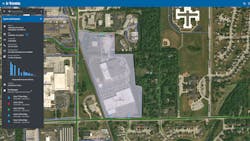Trimble Fleet Manager now features dwell time data
Efficient fleet operation depends on an accurate understanding of where your assets are, the time they spend at each destination, and when they’ll arrive at the next. Unfortunately, dwell times can vary wildly, cost time and revenue, negatively impact customer relationships, and frustrate drivers. But giving fleet managers access to aggregated dwell time metrics that provide actionable insights for better planning and decision-making with Trimble’s fleet management software can help solve this problem.
Trimble Fleet Manager, the company’s fleet management system, now includes industry-specific average dwell time metrics via Connected Locations.
Read more: How to rightsize your fleet maintenance management system“The Connected Locations integration with Trimble Fleet Manager significantly enhances our customers’ ability to manage their fleets,” said Ron Bisio, senior vice president, Trimble. “Fleets can’t get this level of precise commercial location data anywhere else, and by leveraging the Trimble Transportation Cloud, we’re helping solve challenges around inefficient delivery, scheduling and driver utilization.”
Connected Locations are coded with polygonal geofences that reflect a location’s true size, geography, and road connections; as well as entry and exit gates where known; and additional location attributes (such as operating hours, phone numbers, and gate notes). These geofences function with Trimble’s Geographic Information System (GIS), which produces the company’s database of commercial locations.
Trimble Fleet Manager then combines this location data with aggregate dwell time metrics to provide fleet managers a clear picture of how long a driver and their vehicle might reside in a location.
For example, if the typical dwell time in a facility is 30 minutes, fleet managers gain a better understanding of when a driver might leave and continue on the route once they arrive at that facility.
These new features add up to increased visibility on a vehicles’ location and schedule, empowering more proactive planning decisions and easy resolutions for customer inquiries.


